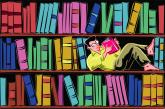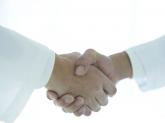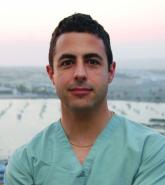Opinion

When the patient wants to speak to a manager
- Author:
- Jeffrey Benabio, MD
The level of incivility from patients is at an all-time high.
News

My recommendations for the best books of 2018
- Author:
- Jeffrey Benabio, MD
These books include one that provides practical takeaways you can immediately incorporate into your daily routine, to feel more productive,...
Opinion

Slowing down
- Author:
- Jeffrey Benabio, MD
This past Labor Day weekend, I did something radical. I slowed down. Way down.
Opinion

Creating positive patient experiences
- Author:
- Jeffrey Benabio, MD
Let’s start with an exercise, shall we? What was the last vacation you went on? How would you rate that vacation on a scale of 1-10?[[{"fid":"...
Opinion

Tabata training
- Author:
- Jeffrey Benabio, MD
The specific move you do for Tabatas is up to you, but it’s recommended that it be the same move for all 4 minutes.
Opinion

Impostor syndrome
- Author:
- Jeffrey Benabio, MD
Impostor syndrome is common and often occurs at moments of transition.
News

Handshake
- Author:
- Jeffrey Benabio, MD
It’s only recently, after having done it thousands of times, that I came to realize there is a better way to shake hands.
News

My choices for best books of 2017
- Author:
- Jeffrey Benabio, MD
These include a book written by a physician, with stories, supported by studies, that can help strengthen your mindfulness muscles in your...
Opinion

Burnout
- Author:
- Jeffrey Benabio, MD
Through the years I’ve developed a strategy that has helped me make the most of call week and any other difficult period.
Opinion

How to give a talk
- Author:
- Jeffrey Benabio, MD
Preparation, brainstorming about content you want to cover, and choosing the right visuals are among the fundamentals to giving a good talk.
Opinion

Morning rituals
- Author:
- Jeffrey Benabio, MD
In his new column, Dr. Benabio discusses the importance of morning rituals for doctors.
Opinion

Reflecting on my first 10 years
- Author:
- Jeffrey Benabio, MD
In September, the scope of the Digital Doctor column will be expanding to include more than just a focus on digital medicine.
Opinion

How patients want their biopsy results
- Author:
- Jeffrey Benabio, MD
What are the benefits of providing patients their pathology results by email?
Opinion

A note about OpenNotes
- Author:
- Jeffrey Benabio, MD
Dr. Benabio recounts an experience with the OpenNotes program.
Opinion

Combining teamwork and technology when tragedy strikes
- Author:
- Jeffrey Benabio, MD
How a combination of teamwork, smartphones, and other technology helped meet a colleague’s needs.
